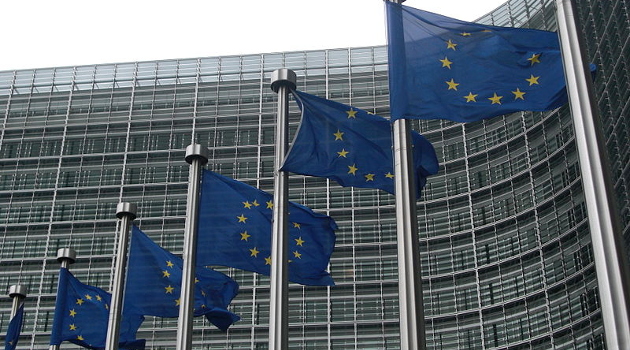I periodically share data comparing the United States and Europe, usually because I want to convince people that America’s medium-sized welfare state is better (less worse) than Europe’s bloated welfare states.
In other words, Bernie Sanders is wrong.
 But I sometimes feel guilty when making these unflattering comparisons because Europe – at least by world standards – actually deserves a good bit of praise.
But I sometimes feel guilty when making these unflattering comparisons because Europe – at least by world standards – actually deserves a good bit of praise.
If you look at Economic Freedom of the World, you’ll find that the 28 nations of the European Union (outlined in red) have relatively strong scores. Indeed, 27 of them rank in the top half, with Greece being the embarrassing exception.
And 17 EU nations rank in the top quartile, three of them above the U.S.
If you dig into the data, you’ll find that EU nations generally get crummy scores for fiscal policy, but misguided policies on taxes and spending are more than offset by superior scores for trade, monetary policy, regulatory policy, and quality of governance.
Now let’s look at some recent trends. I mentioned yesterday that I’m at the European Parliament in Brussels for a conference on economic freedom.
 My friend Martin Agerup from Denmark gave an overview of economic freedom in EU nations, and I want to highlight some of his slides.
My friend Martin Agerup from Denmark gave an overview of economic freedom in EU nations, and I want to highlight some of his slides.
We’ll start with this modified ranking of economic freedom, which looks at where a hypothetical European nation would rank if it cherry-picked the best real-world scores (for the five major indices) of the various EU countries.
This hypothetical country, based on the best practices of various EU nations, would have the third-highest score for economic liberty – trailing only Hong Kong and Singapore.
This underscores my point about considerable economic liberty in Europe.
Martin also looked at trends in the European Union.
Here’s a slide looking at the evolution of economic freedom in Western Europe and Eastern Europe.
Three things are worth noting about this chart.
- First, there was a dramatic improvement in economic freedom in Western Europe (blue line) from 1975-2000. Many people know about Thatchernomics, but there was a lot of pro-market reform in the rest of Europe.
- Second, you’ll notice the giant jump in economic freedom in Eastern Europe (red line) from 1995-2005. The collapse of communism has resulted in vast improvements in economic liberty.
- Third, the overall continent has seen comparatively little progress in recent years.
But averages can be deceiving. This next chart shows that some nations did rise and fall over the past decade. Many Eastern European nations boosted their scores by a modest degree, and Sweden also deserves a special mention.
Greece stands out for the worst performance in the past 10 years.
Which gives me an excuse to share one final chart from Martin’s presentation. Sweden suffered a deep crisis at the start of the 1990s, somewhat akin to what Greece suffered in 2008. But the two countries responded in radically different ways. Sweden shrank government and boosted economic liberty while Greece increased the size and scope of the state (aided and abetted by bailouts!).
This video has more details on the comparison of the two countries.
P.S. Notwithstanding the relatively nice things I just wrote about Europe, the continent faces some major fiscal challenges. And middle-class taxpayers, who already are being suffocated by high taxes, will probably get further pillaged.
———
Image credit: Sébastien Bertrand | CC BY 2.0.



